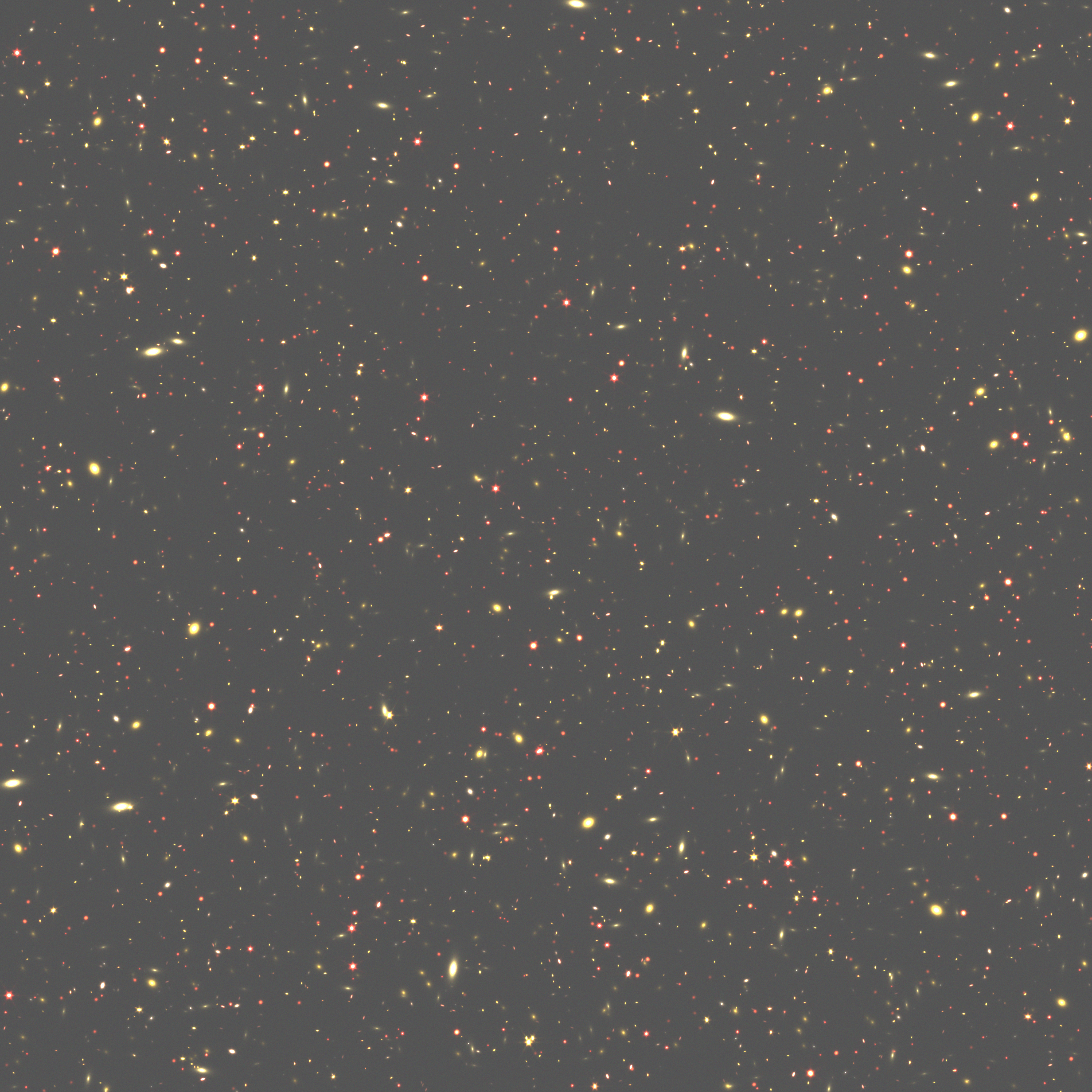HLS Simulations Using GalSim and IMCOM
WFI Direct Imaging Simulations in Support of Weak Lensing
Summary
The SDT 2015 report proposed a high-latitude survey (HLS) to image 2227 deg2 in 4 NIR bands (Y, J, H, and F184) spanning the range 0.92—2.00 μm to predicted AB magnitudes of 25.8—26.7, depending on band. This page is a repository of simulations of the HLS to help the community plan related Roman Space Telescope observations. The focus is on weak-lensing observations due to their importance in setting Roman Space Telescope imaging requirements. Photometry obtained with the Wide-Field Instrument (WFI) will be used to obtain shapes and photometric redshifts (when combined with ground based photometry) for ∼45 galaxies per square arcminute. Deeper images with the WFI, for instance in the supernova detection fields, will be able to obtain weak lensing measurements of well over 200 galaxies per square arcminute.
Generating the Sky Scene
The user selects which objects to include in the simulation. For example, the user could use all galaxies in the COSMOS catalog down to some magnitude limit, or the user may assemble a list of stars at random locations, etc. For a detailed explanation of how to generate a sky scene, see scene.py docstring.
Reference Parameters (SDT 2015 Report)
| Mirror diameter (m) | 2.36 |
| Detectors | 6 X 3 H4RG-10 |
| Plate scale (arc-sec/pix) | 0.11 |
| Field of view (deg2) | 0.282 |
Further parameters are listed in the GalSim Roman module docstring, which users can obtain within GalSim (after importing the Roman module via 'import(galsim.roman)') by typing help(galsim.roman), or by reading the init.py file. For details about bandpasses, WCS, etc. users will need to read the docstrings about the routines in the module (or, they can be accessed via the Python interpreter help command). The bandpasses and zodiacal values are taken from Chris Hirata's WFIRST Exposure Time Calculator, version 14.
GalSim and IMCOM
The simulations posted here are being produced using the open-source Galsim (ref: Rowe et al., 2015) image simulation suite. The GalSim Roman module for simulating WFI images is currently available (after installing GalSim from the master branch), including the use of realistic Hawaii-4RG detector effects (read noise, nonlinearity, interpixel capacitance, charge spreading among pixels, reciprocity failure), a Roman Space Telescope specific PSF, and throughput and filter curves from the current design reference mission. The simulated images can then be dithered/combined with IMCOM (ref: Rowe, Hirata & Rhodes, 2011) that is optimized for weak lensing and specifically designed with the Roman Space Telescope as a primary application.There is a demo script available that demonstrates how the GalSim Roman module works. By clicking the "Raw" button it is possible to download it.
Output from GalSim Simulations
An example output image from the GalSim demo script. Only ten COSMOS galaxy images were used in making this image. The images were rescaled by the same factor in all three colors, and rotated randomly. The rgb function in ds9 was used to put the images from different filters together. The colors seen in the images are therefore not meant to reproduce the real galaxy color distribution. This 4088x4088 image has a linear flux scaling, and filters are color coded so that H158 is red, J129 is green, and Y106 is blue. Click to zoom in.
